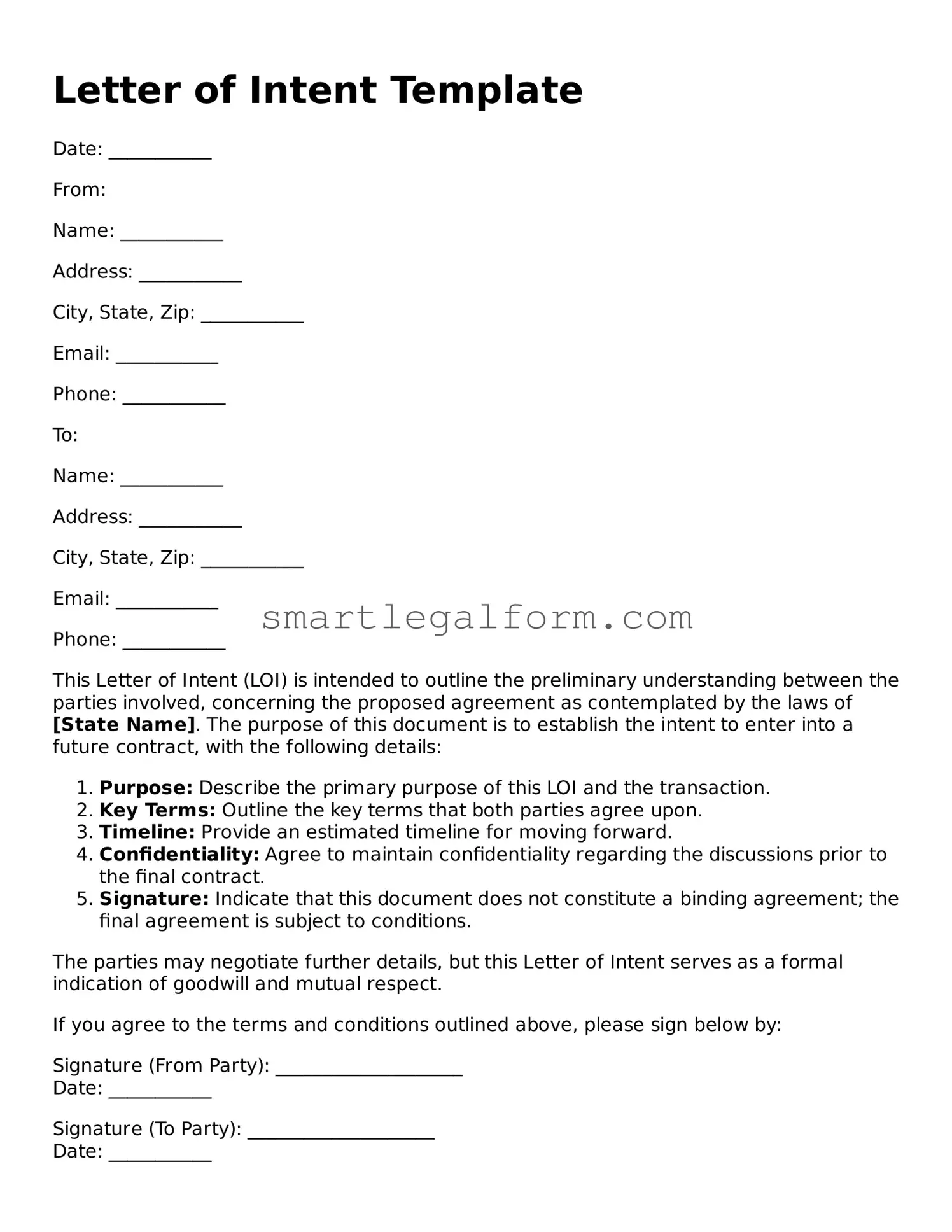Letter of Intent Template
Date: ___________
From:
Name: ___________
Address: ___________
City, State, Zip: ___________
Email: ___________
Phone: ___________
To:
Name: ___________
Address: ___________
City, State, Zip: ___________
Email: ___________
Phone: ___________
This Letter of Intent (LOI) is intended to outline the preliminary understanding between the parties involved, concerning the proposed agreement as contemplated by the laws of [State Name]. The purpose of this document is to establish the intent to enter into a future contract, with the following details:
- Purpose: Describe the primary purpose of this LOI and the transaction.
- Key Terms: Outline the key terms that both parties agree upon.
- Timeline: Provide an estimated timeline for moving forward.
- Confidentiality: Agree to maintain confidentiality regarding the discussions prior to the final contract.
- Signature: Indicate that this document does not constitute a binding agreement; the final agreement is subject to conditions.
The parties may negotiate further details, but this Letter of Intent serves as a formal indication of goodwill and mutual respect.
If you agree to the terms and conditions outlined above, please sign below by:
Signature (From Party): ____________________
Date: ___________
Signature (To Party): ____________________
Date: ___________
This Letter of Intent is governed by the principles of good faith and fair dealing under the relevant state laws of [State Name].
Thank you for considering this proposal. Please feel free to reach out with any questions.
